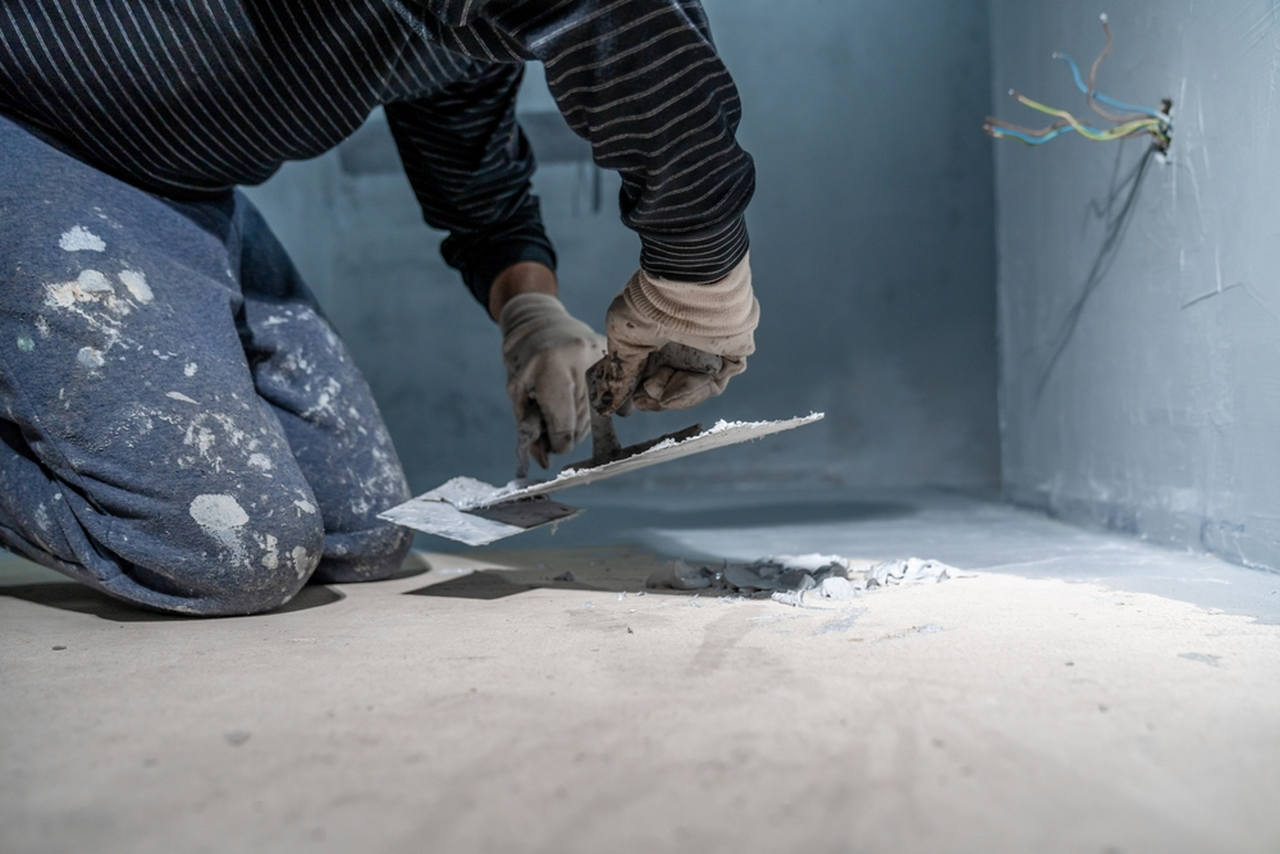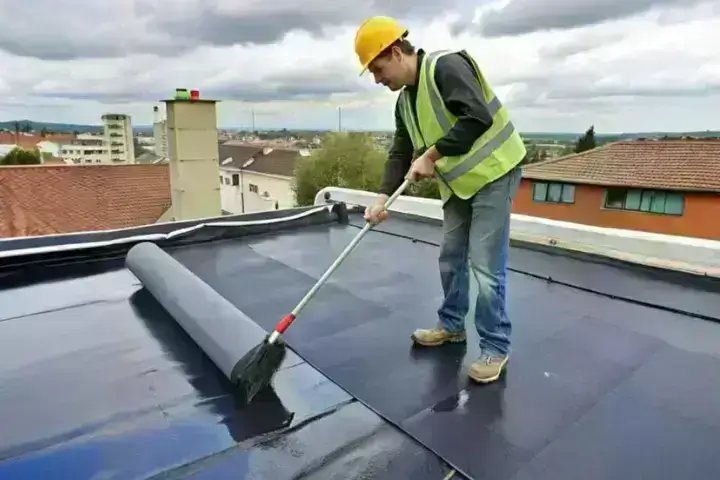Why Waterproofing Is Critical for Durable Frameworks: an Extensive Analysis
Waterproofing plays an important role in the long life of structures. It functions as an obstacle versus moisture, which can bring about substantial problems like mold and damage. Comprehending the various waterproofing approaches and their effects is important for home owners. The effects of ignoring this aspect can be extreme. Checking out these components exposes not simply the requirement of waterproofing, but likewise its broader influence on residential property value and safety and security.
Understanding Waterproofing: Interpretation and Significance
Waterproofing acts as a necessary obstacle against dampness intrusion, securing frameworks from prospective damages. It encompasses different approaches and materials developed to avoid water penetration right into structures, guaranteeing durability and capability. The importance of waterproofing can not be overstated, as it safeguards against an array of concerns, consisting of mold growth, wear and tear of materials, and structural weakening.Effective waterproofing solutions can include membrane layers, coatings, and sealants, each tailored to certain settings and architectural designs. By producing a protective layer, these options aid keep a dry interior, which is essential for the health and wellness of owners and the conservation of home value.Moreover, spending in waterproofing at the building and construction stage is substantially extra cost-effective than dealing with water-related issues after they occur. Recognizing the concepts of waterproofing is important for designers, home builders, and property proprietors intending for resilient, resilient frameworks that hold up against the examination of time and environmental challenges.

The Impact of Water Damage on Architectural Honesty
Water damage positions considerable threats to architectural integrity, mainly with the development of mold and mildew and mildew. These organisms not only jeopardize interior air top quality but also cause product destruction with time. Additionally, extended direct exposure to dampness can weaken structural elements, boosting the chance of collapse or failure.
Mold and Mildew Growth
Moisture invasion positions a considerable danger to the architectural honesty of structures, bring about the proliferation of mold and mold. These fungis prosper in wet settings, usually settling in covert locations such as wall surface dental caries, under floor covering, and in ceilings. Their development not only develops undesirable stains and unpleasant odors yet also adds to a decline in indoor air high quality, presenting health and wellness dangers to residents. Mold and mildew can endanger products like wood and drywall, resulting in further dampness retention and developing a cycle of damage. Early detection and removal are important to protect against considerable development, underscoring the need of reliable waterproofing steps. Dealing with dampness problems quickly can protect both the wellness of occupants and the longevity of the framework.
Structural Weakening Threats
Unrestrained moisture breach can result in extreme structural weakening, threatening the stability of buildings. Water damages frequently influences foundational parts, such as beams, columns, and wall surfaces, resulting in endangered load-bearing capacity. Long term exposure to wetness can cause materials like timber to rot and steel to corrode, damaging their structural residential or commercial properties. This damage may cause cracks, bowing, or even tragic failures if left unaddressed. French drain installation Omaha. Additionally, water infiltration can threaten the dirt below foundations, creating settling or changing that further worsens architectural dangers. Therefore, applying effective waterproofing options is critical in preserving a building's structural stability, protecting against pricey repairs, and guaranteeing security for passengers. Correct upkeep and aggressive measures are important in reducing these considerable threats connected with water damages
Sorts Of Waterproofing Approaches and Products
Waterproofing approaches and products play a critical role in safeguarding structures from water damage. Key techniques consist of membrane layer waterproofing, which supplies a physical obstacle; liquid waterproofing services that develop a seamless coat; and cementitious waterproofing options known for their resilience and ease of application. Understanding these various approaches is essential for selecting one of the most ideal technique for particular building needs.
Membrane Layer Waterproofing Strategies
Membrane waterproofing techniques are important for protecting frameworks from the harmful effects of water seepage. These techniques include the application of waterproof membrane layers that produce a barrier versus wetness. The two key kinds of membrane systems are sheet membrane layers and liquid-applied membranes. Sheet membrane layers, normally made from materials such as rubberized asphalt or polycarbonate, are built and can be presented and stuck to surface areas. In contrast, liquid-applied membrane layers are applied as a fluid and remedy to form a smooth layer. Both types offer versatility and resilience, satisfying different applications, consisting of roofings, basements, and structures. Proper setup and upkeep of these membranes assure long-lasting defense, enhancing the life-span and integrity of the frameworks they safeguard.
Liquid Waterproofing Solutions
Liquid waterproofing services represent a flexible option to standard membrane layer systems. These options commonly entail the application of fluid coatings that cure to form a seamless, durable barrier against water seepage. Numerous kinds of fluid waterproofing products are offered, consisting of polyurethane, bitumen, and acrylic-based formulas. Each type provides distinct residential properties, such as adaptability, bond, and UV resistance, making them appropriate for diverse applications. The application procedure often entails splashing or rolling the fluid onto surfaces, enabling coverage of intricate forms and details, which reduces potential powerlessness. Fluid waterproofing options are especially beneficial for areas with activity, such as joints and fractures, as they can accommodate architectural changes without jeopardizing integrity, ensuring durable security for structures.
Cementitious Waterproofing Options
Numerous cementitious waterproofing alternatives are offered, offering reliable options for various building and construction requirements. These systems generally contain a mix of cement, sand, and ingredients, making them appropriate for both indoor and exterior applications. Amongst the prominent choices are crystalline waterproofing items, which react with wetness to form a water-proof barrier within the concrete matrix. In addition, versatile cementitious layers supply enhanced flexibility, accommodating minor architectural movements without endangering the waterproofing stability. It is additionally common to make use of cementitious sealants for joints and fractures, ensuring complete protection against water seepage. Overall, cementitious waterproofing choices are valued for their resilience, simplicity of application, and compatibility with various substrates, making them a favored selection in modern building techniques.
Long-Term Cost Cost Savings Via Effective Waterproofing
Purchasing efficient waterproofing remedies can significantly minimize lasting costs for building owners and programmers. By preventing water intrusion, these options minimize damages to architectural elements, decreasing the requirement for pricey fixings and maintenance in time. Waterproofing likewise secures indoor coatings and home furnishings, minimizing replacement costs and enhancing the overall lifespan of the property.Moreover, effective waterproofing can result in energy savings by improving insulation and minimizing humidity-related issues. This results in lower heating & cooling expenses, adding to an extra lasting economic version for residential or commercial property management.Additionally, the application of waterproofing steps can enhance home value by ensuring a dry, secure, and sturdy setting. While the preliminary investment in waterproofing might seem substantial, the lasting monetary benefits much outweigh the ahead of time expenses, making it a prudent choice for anybody involved in building and construction or residential property management.

The Function of Waterproofing in Structure Codes and Rules
Waterproofing plays a substantial duty in structure codes and laws, reflecting its importance in modern construction practices. These codes are developed to ensure security, sturdiness, and sustainability in structures, highlighting the requirement for efficient waterproofing procedures. Different national and regional building codes describe particular requirements for waterproofing materials and strategies, specifically in locations susceptible to water invasion, such as basements and foundations.Compliance with these regulations not only shields frameworks from moisture-related damages but also safeguards public health by protecting against mold and mildew development and structural instability. Inspectors often analyze waterproofing components during the construction procedure to ensure adherence to established standards. As environment modification enhances the regularity of severe weather occasions, the function of waterproofing in building codes is anticipated to progress, potentially bring about more stringent policies. On the whole, the combination of waterproofing in regulatory structures highlights its critical duty in accomplishing long-lasting, Click This Link durable structures.
Instance Studies: Effective Waterproofing Solutions
Successful waterproofing remedies have been applied across numerous jobs, showcasing cutting-edge methods that boost structural honesty and durability. One remarkable example is the improvement of the historic Smith Tower in Seattle, where innovative membrane systems were utilized to shield the structure from water breach. This method not just maintained the building's visual yet also expanded its lifespan.In one more situation, a large commercial structure in Miami made use of crystalline waterproofing modern technology, which responds with try this site moisture to develop a barrier against water. This solution proved reliable versus the city's high humidity and heavy rainfall.Additionally, a bridge in San Francisco undertook a comprehensive waterproofing therapy making use of epoxy finishings, which substantially reduced maintenance expenses and boosted durability. These situation researches highlight the effectiveness of tailored waterproofing methods in varied settings, emphasizing the importance of selecting suitable techniques to attend to details obstacles and guarantee the longevity of structures.
Best Practices for Implementing Waterproofing Techniques
Executing efficient waterproofing methods needs cautious planning and adherence to finest methods - Drainage & waterproofing company Omaha. Initially, it is essential to perform a detailed website evaluation to determine prospective areas of water ingress. This evaluation informs the selection of ideal products and techniques tailored to details ecological conditions. Making use of top notch, long lasting waterproofing membranes can substantially boost security versus moisture.Additionally, appropriate installation strategies are necessary; guaranteeing that surfaces are tidy and devoid of pollutants advertises suitable adhesion. Normal maintenance checks should be arranged to identify any kind try this web-site of indications of wear or damages, enabling for prompt repairs.Moreover, integrating water drainage systems can successfully manage water overflow, avoiding buildup around structures. Enlightening all personnel associated with construction regarding waterproofing requirements additional warranties consistency and adherence to ideal practices. Eventually, a proactive technique to waterproofing can greatly prolong the life-span of structures and minimize lasting maintenance expenses
Regularly Asked Questions
Exactly How Does Waterproofing Affect Power Efficiency in Buildings?
Waterproofing considerably enhances energy effectiveness in structures by preventing moisture invasion. This lowers the need for heating & cooling, keeps consistent indoor temperatures, and eventually decreases power intake, adding to long-term sustainability and expense financial savings.
Can Waterproofing Be Applied to Existing Frameworks?
Waterproofing can without a doubt be applied to existing structures. Various methods, such as membranes, finishes, and sealers, make it possible for homeowner to improve security against wetness, consequently lengthening the framework's stability and lowering possible damages with time.
What Are the Indicators of Inadequate Waterproofing?
Indicators of poor waterproofing consist of water spots on walls, mold growth, peeling paint, moldy odors, and moisture in cellars - Water Solutions. These indications recommend possible architectural damage and the demand for prompt attention to stop more degeneration
Exactly How Frequently Should Waterproofing Be Examined or Maintained?
Waterproofing needs to be checked a minimum of yearly, specifically in areas with heavy rains or rising and falling temperatures. Regular upkeep assurances early discovery of issues, advertising structural integrity and lengthening the life expectancy of the building.
Exist Eco-Friendly Waterproofing Options Available?
Environmentally friendly waterproofing options are significantly available, making use of sustainable products such as bio-based polymers and natural sealers. These options not just secure structures however also lessen environmental effect, appealing to eco conscious building contractors and homeowner.